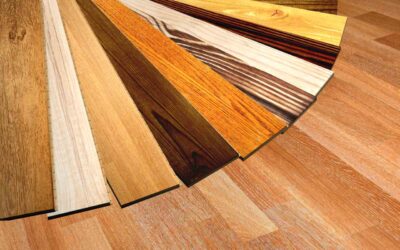We have been talking a lot about how to properly care for tile, once it has been installed, but even the best tile cleaning treatment is futile if the initial tile installation has been shoddy, flawed or is lacking expertise. While installing tile seems to be a straightforward process, most DIYers discover sooner or later that laying tile in your own home is slightly more challenging than initially anticipated. To ensure that your tile is going to stand the test of time, we want to take a look at common tile installation issues and problems.
- Not adding an extra 10% of tile to your tile order. Depending upon the design, you may need extra to match up the pattern in the room. It is also good to have extra tile on hand just in case you cut one incorrectly or worse drop one and break it.
- Not taping underlayment seams in high moisture rooms, such as a bathroom. If there is even a tiny sliver of an unprotected seam in your underlayment or tile, water will find its way into it and over time wreak havoc on your floor or room. As you can see from the underlayment dry fit below, there will be seams around the plumbing fixtures and pieces of underlayment which will still be there when I attach the mat underlayment to the subfloor with thinset mortar. For mat underlayment like mine you can easily use thinset mortar to apply over the seams like taping the top of a cardboard box shut to keep water from potentially leaking through the seams before, during or after the tile is installed.
- Using the wrong kind of thin set mortar adhesive for the type of tile you are using.For example, glass tile, natural tone tile, and porcelain tile use different types of adhesives that will affect the outcome of your project poorly if you try to interchange them. This is easily solved by carefully reading the package for the type of tile you will use for your project. In this case, I am using a porcelain tile that is printed and textured to look like natural slate tile. That means I used this exact porcelain tile thin set mortar to adhere it to the mat underlayment.
- Using the wrong tools to cut tile.The type of tile cutting tool you will need to use will depend upon the size and type of tile. If you are using small mosaic tile you might be able to use a tile nipper (it looks this) (if nothing else a tile nipper is handy to have if you need to make small cuts in your tile to go around plumbing and such.) If you are using thin small format tiles you may be able to use a manual tile cutter (it looks like this) If you are using thick, natural stone, or large format tiles you will most likely need to use a wet tile saw with a diamond blade like this one.
- Mixing your thinset mortar adhesive and tile grout too thick or too thin. Both should have the consistency of peanut butter. I took the guesswork of trying to mix my tile mortar too thick or too thin by buying premixed ceramic thin set tile mortar here I mixed the tile grout from powder because I had it leftover from another project otherwise, I would have gone the premixed route for that too.
- Using the wrong notch size trowel for the size of the tile and not applying an even coat of thinset tile mortar.Use the small notch side of the trowel when you are using small format tiles like the photo below. Use the large notch side of the trowel when you are working with large format tiles (which is what I used for my large bathroom tile.) This will also help you spread and then notch and even coat of thinset on your surface. If your thinset is uneven, the floor tile may eventually crack with use.
- Grouting the tile too soon after it is laid. It’s best to wait at least 24 hours from the time you’ve laid your tile to the time you grout it to let the adhesive set otherwise the tiles can shift and/or crack. Chances are you’ll be tired after tiling so kick back with an ice-cold beverage and think about the fantastic tile you just laid.
- Using the wrong type of grout for your tile. If the area in between your floor tiles is less than 1/8-inch-wide use unsanded grout. If the area in between your floor tiles is larger than 1/8 inches wide you need to use sanded grout. If you are using glass tile, you will need to use glass tile grout. No matter which type of grout your tile requires, you should wait 24 hours for it to dry before sealing it. Aren’t you glad you used those tile spacers to keep your grout lines nice and even?
- Not sealing your grout.Even when dry, tile grout is still a bit porous and can absorb water because it is made from a mixture of sand and cement. This is why grout may mold or mildew. Applying grout sealer to the grout lines in your tile project is easy to do and helps prevent the grout from absorbing moisture and bacteria. You can buy grout sealer in a grout line sized squeeze bottle like this, apply it to the tile grout lines and wait until the sealer dries. Simple! And something that should be reapplied every two years or so. You really don’t want to ruin all of that hard work, do you?




0 Comments